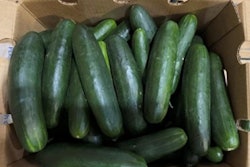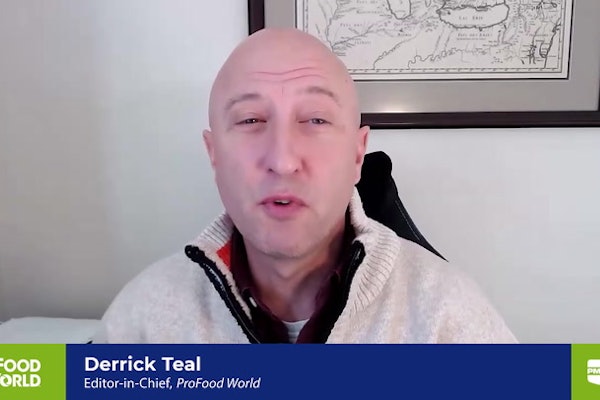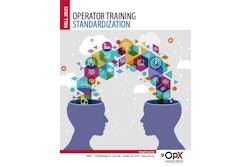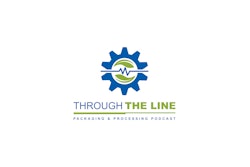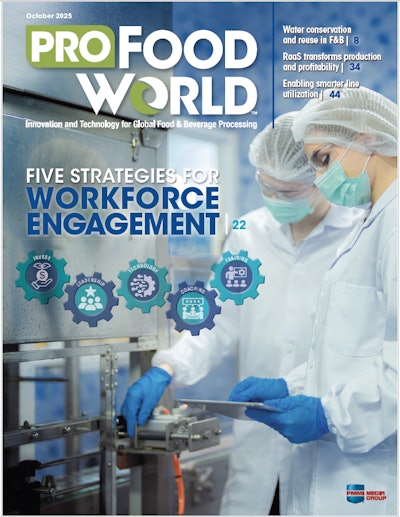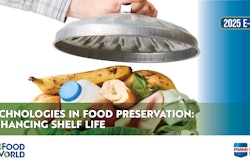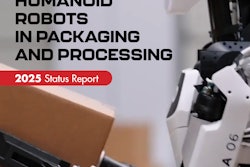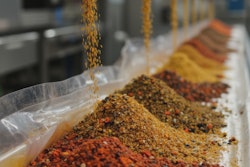
A recent Consumer Reports story about lead levels in snack puffs for toddlers shed some light on the still-in-progress federal regulations for lead in food. Currently, the FDA is finalizing lead levels for fruit juices and baby food, but everything else—including snacks—doesn’t yet have a threshold for lead set by the government.
As a result, states like California have taken the initiative to set their own limits on contaminants in food and food packaging, which may not apply to other states. This creates another layer of confusion for food manufacturers that have nationwide distribution for their products, while the potential cost of reformulating their food and beverages to comply with individual states adds an additional financial hurdle.
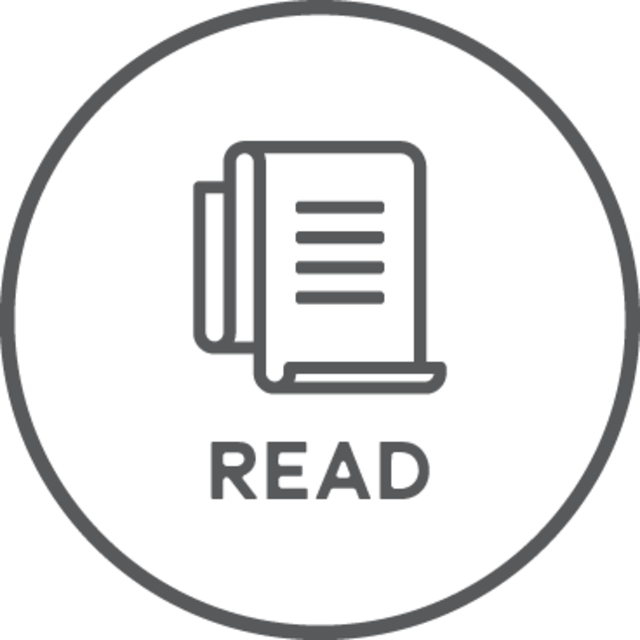 | FDA reorganization promises more effective food safety. |
At this year’s SNX show in Dallas, Martin Hahn, partner at Hogan Lovells and SNAC International general counsel, guided a session about government regulation in food labeling, ingredients, traceability, and contaminants. You can read our story about Hahn’s labeling observations and advice to food manufacturers here. Regarding contaminants, Hahn detailed the following proposed and upcoming regulations that can impact manufacturers.
Lead levels
The FDA draft guidance for lead in baby food was issued in January, 2023, and is expected to be finalized in 2025. The proposal would limit lead in baby food to 10 parts per billion (ppb) in multi-ingredient baby food, 20 ppb for single ingredient root vegetable baby food, and 20 ppb for dry baby cereals. The proposal would limit lead in apple juice to 10 ppb, and all other fruit juices to 20 ppb.
“I realize that your products are not intended for children under two for the most part,” says Hahn. “Some of you do have snacks for that particular category, but what we’re seeing with lead is those numbers are kind of becoming established. Even though our [snack] products are not specifically covered by this guidance on baby foods, if you start seeing products that have more than 20 ppb of lead, that’s going to be a potential concern. Not with the FDA, but class-action lawyers going out and testing products and then saying, ‘Oh, look how high these lead levels are. We’ll bring a challenge under Prop 65.’”
Hahn added that “these levels matter, even though your products are not made for children under two. We are seeing a great deal of criticism coming from the NGOs (non-government organizations) and I am concerned about the class-action liability.”
Additives and packaging
Another area of concern for Hahn is states like California passing their own ingredient bans of additives in food that are currently approved by the FDA. He noted that as of January, 2025, California will ban FDA-approved additives Red 3, propylparaben, bromated vegetable oil, and potassium bromate. Hahn notes this sets a precedent for other states to create their own rules rather than everyone following the FDA’s lead.
“It makes it really hard to function as a manufacturer of products that are distributed throughout the U.S. when you have states starting to ban ingredients that FDA has continued to say, can lawfully be added to the food supply,” Hahn says.
Per- and polyfluoroalkyl substances (PFAS) in food packaging have also come under the regulatory microscope, according to Hahn. While the FDA had negotiated a phased approach with the industry to eliminate these substances by 2026, several states have imposed immediate bans, leaving manufacturers scrambling to comply. The lack of a sell-through period for existing stock exacerbates the situation, forcing companies to adapt quickly or face penalties. “It makes it really hard to function as a manufacturer of products that are distributed throughout the U.S. when you have states starting to ban ingredients that FDA has continued to say, can lawfully be added to the food supply,” says Martin Hahn, partner at Hogan Lovells.Michael Costa
“It makes it really hard to function as a manufacturer of products that are distributed throughout the U.S. when you have states starting to ban ingredients that FDA has continued to say, can lawfully be added to the food supply,” says Martin Hahn, partner at Hogan Lovells.Michael Costa
Hahn says currently, 12 states have passed laws banning food packaging that contain intentionally added PFAS. California and New York were the first to adopt their own rules in 2023, and most other states put their regulations into effect this year. Each state law is similar, but slightly different, creating additional challenges for manufacturers.
“We as an industry can deal with these issues regardless of whether there actually is a safety issue with PFAS, but you have to have time,” Hahn explains. “FDA was giving the industry time to do this in a very systematic way, yet the states come in, ban an ingredient that is still approved for use by FDA, and that phase-out period have not gone through yet.”
The issue of packaging waste and recycling is another significant concern, according to Hahn, because states are increasingly holding manufacturers accountable for the end-of-life management of their packaging materials. California’s redefinition of what qualifies as recycled material, for example, has far-reaching implications. Even if a type of plastic is accepted for recycling in all jurisdictions within the state, it may no longer be labeled as recycled if it is not widely recycled. This shift in terminology and the associated responsibilities place additional burdens on manufacturers to ensure their packaging meets these new criteria.
Water regulation
The EPA’s recent establishment of ppt levels for PFAS in drinking water —tap, not bottled—further underscores the tightening regulatory environment. This past April, according to the EPA, the agency issued the first-ever national, legally enforceable drinking water standard to protect communities from exposure to PFAS. The final rule aims to reduce PFAS exposure for approximately 100 million people, prevent thousands of deaths, and reduce tens of thousands of serious illnesses. EPA concurrently announced a further $1 billion to help states and territories implement PFAS testing and treatment at public water systems and to help owners of private wells address PFAS contamination.
The thresholds set for PFAS chemicals in drinking water by the EPA include:
- PFOA = 4 ppt
- PFOS = 4 ppt
- PFHxS = 10 ppt
- PFNA = 10 ppt
- Gen X Chemicals = 10 ppt
While there are no current federal guidelines for PFAS in bottled water, the International Bottled Water Association recommends limits of 5 ppt for one PFAS detected, and 10 ppt for two or more PFAS found. The FDA is responsible for regulating bottled water, while the EPA oversees tap water.
“I’m not confident the data on PFAS is strong enough to justify these levels,” Hahn says. “I can assure you, if you have very low levels of PFOA or PFOS in your food products and they’re detectable, NGOs and Consumer Reports will go out there and test your products and say, ‘Oh my goodness, we found 3.5 parts per trillion of PFOA in a soft drink.’ Well, that’s not a safety issue, but it doesn’t really matter because we have these very low levels that are being established by EPA.”
 While there are no current federal guidelines for PFAS in bottled water, the International Bottled Water Association recommends limits of 5 ppt for one PFAS detected, and 10 ppt for two or more PFAS found.Getty
While there are no current federal guidelines for PFAS in bottled water, the International Bottled Water Association recommends limits of 5 ppt for one PFAS detected, and 10 ppt for two or more PFAS found.Getty
Hahn adds that trace amounts of these substances—or others like bisphenols, phthalates, and microplastics—in food products can trigger significant concerns in the public, driven by consumer advocacy groups and media reports. This in turn, makes the job of a processor even more difficult while trying to navigate this shifting landscape.
“I am pro trying to make certain our food is safe, but we’re coming up with these numbers that have detections where we can’t even put our arms around them,” says Hahn. “Just because [contaminants] have been detected, many times that doesn’t mean it’s a safety issue. But when they are found, we see the NGOs just driving this entire issue even further.”


